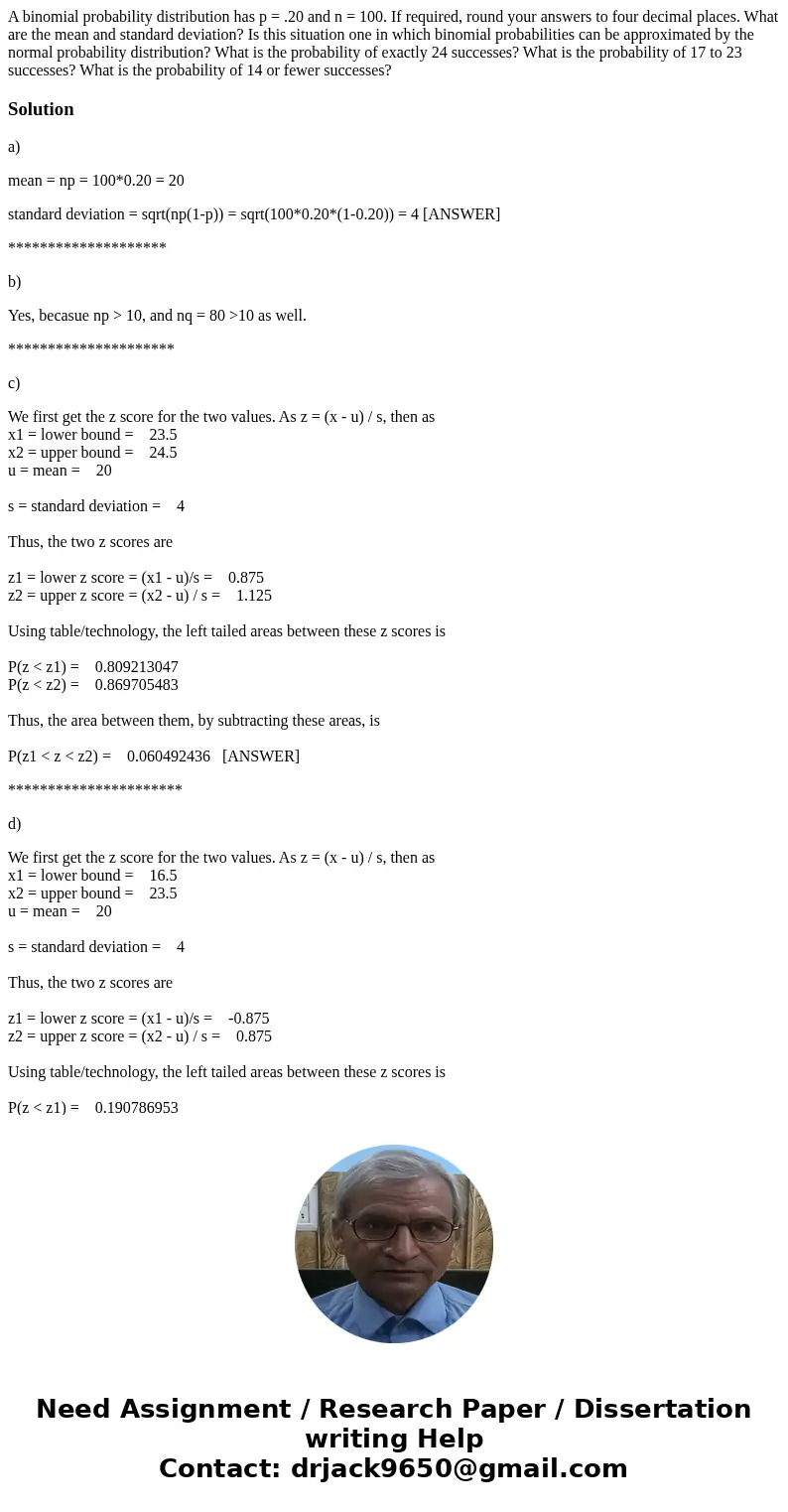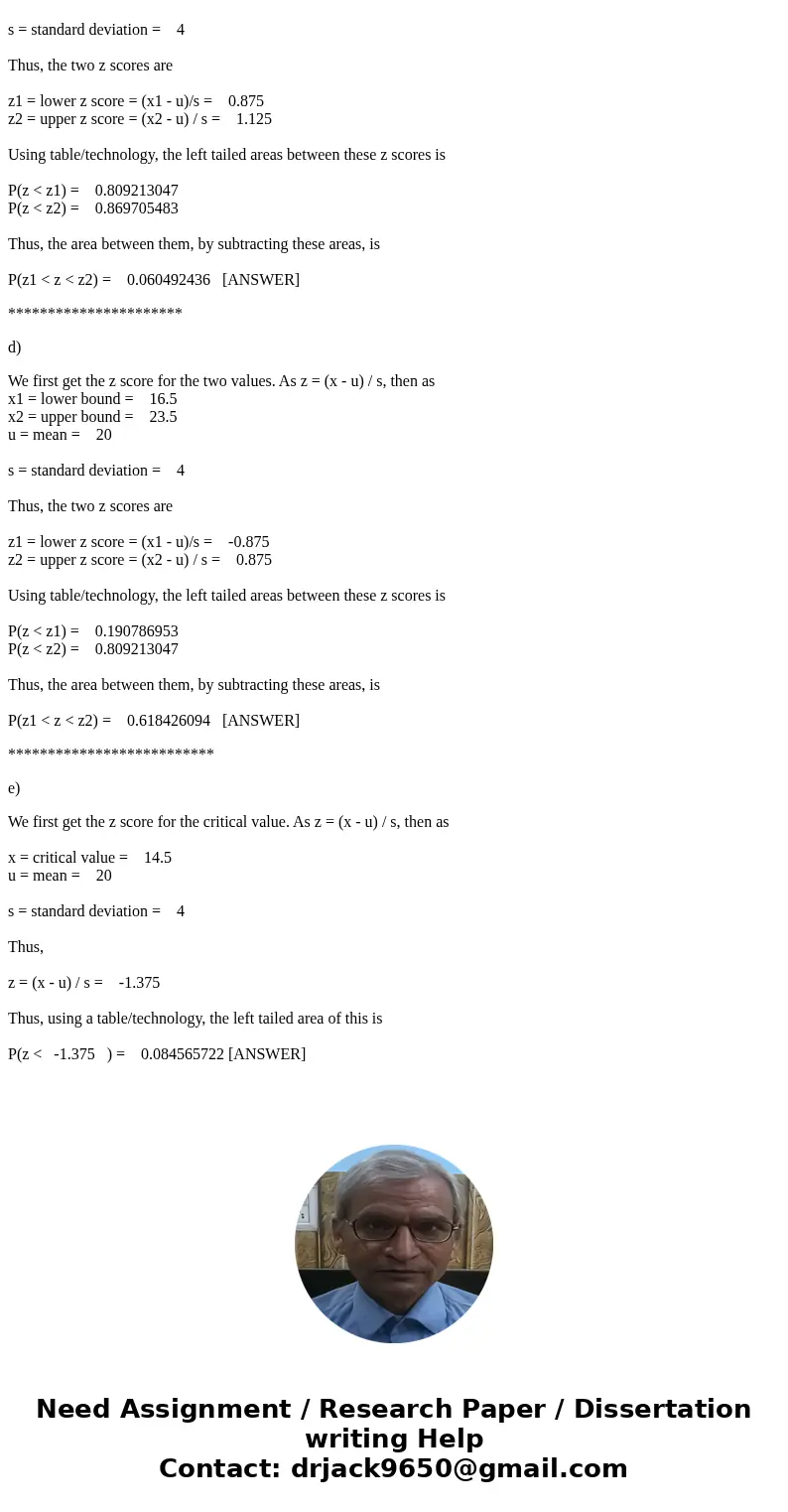A binomial probability distribution has p 20 and n 100 If
Solution
a)
mean = np = 100*0.20 = 20
standard deviation = sqrt(np(1-p)) = sqrt(100*0.20*(1-0.20)) = 4 [ANSWER]
********************
b)
Yes, becasue np > 10, and nq = 80 >10 as well.
*********************
c)
We first get the z score for the two values. As z = (x - u) / s, then as
x1 = lower bound = 23.5
x2 = upper bound = 24.5
u = mean = 20
s = standard deviation = 4
Thus, the two z scores are
z1 = lower z score = (x1 - u)/s = 0.875
z2 = upper z score = (x2 - u) / s = 1.125
Using table/technology, the left tailed areas between these z scores is
P(z < z1) = 0.809213047
P(z < z2) = 0.869705483
Thus, the area between them, by subtracting these areas, is
P(z1 < z < z2) = 0.060492436 [ANSWER]
**********************
d)
We first get the z score for the two values. As z = (x - u) / s, then as
x1 = lower bound = 16.5
x2 = upper bound = 23.5
u = mean = 20
s = standard deviation = 4
Thus, the two z scores are
z1 = lower z score = (x1 - u)/s = -0.875
z2 = upper z score = (x2 - u) / s = 0.875
Using table/technology, the left tailed areas between these z scores is
P(z < z1) = 0.190786953
P(z < z2) = 0.809213047
Thus, the area between them, by subtracting these areas, is
P(z1 < z < z2) = 0.618426094 [ANSWER]
**************************
e)
We first get the z score for the critical value. As z = (x - u) / s, then as
x = critical value = 14.5
u = mean = 20
s = standard deviation = 4
Thus,
z = (x - u) / s = -1.375
Thus, using a table/technology, the left tailed area of this is
P(z < -1.375 ) = 0.084565722 [ANSWER]


 Homework Sourse
Homework Sourse